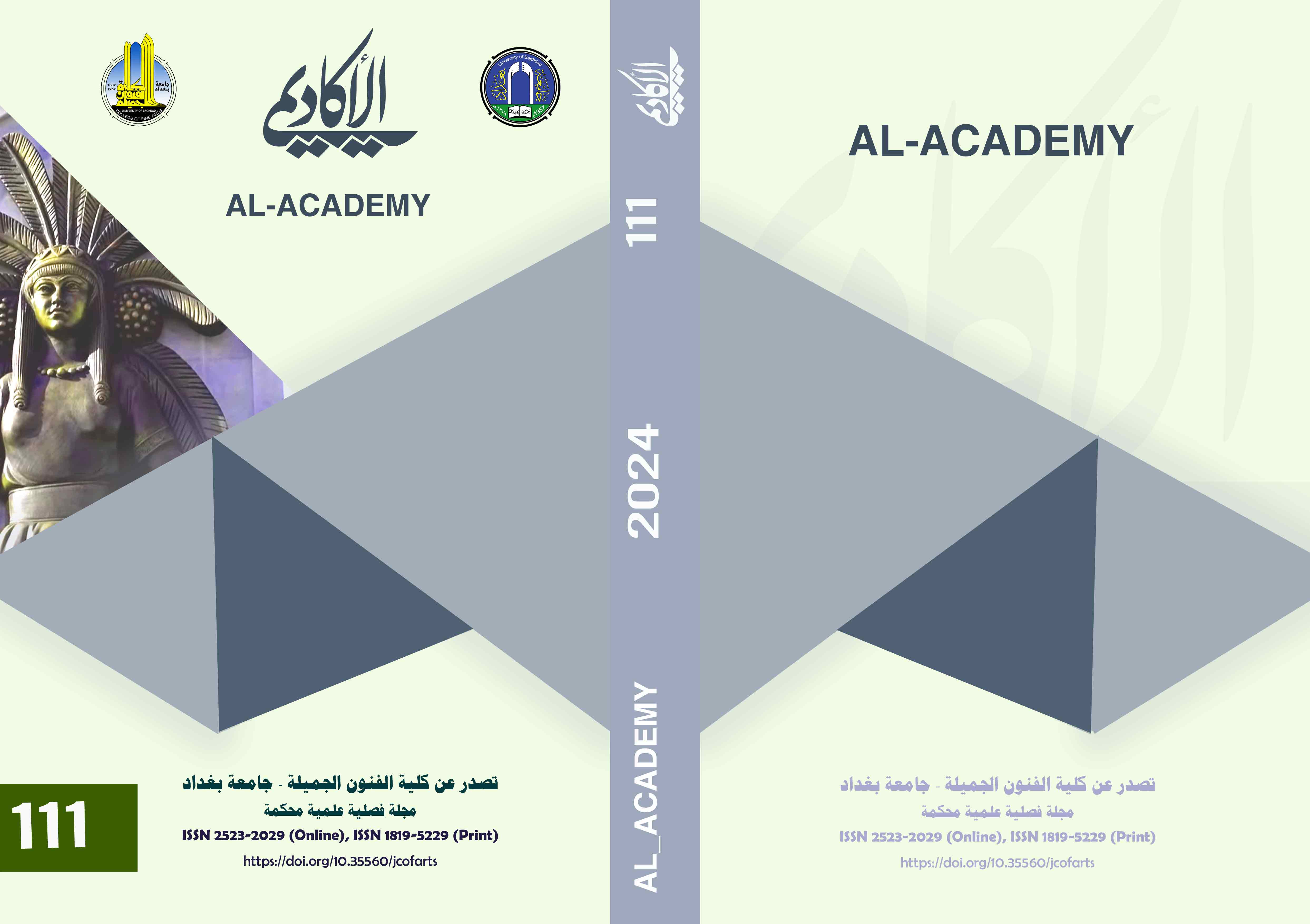The effect of Generative Artificial Intelligence (GAI) on the digital design skills of multimedia students at the College of Art and Design
DOI:
https://doi.org/10.35560/jcofarts1260Keywords:
artificial intelligence, digital design, multimediaAbstract
the study aimed to find out the impact of teaching using Generative Artificial Intelligence tools (GAI) on enhancing digital design skills among multimedia students at the School of Arts and Design, the University of Jordan.
The researcher followed the semi-experimental approach to the nature of the study, the students were deliberately selected and the people were randomly distributed. The study community is made up of
38 students from the School of Arts and Design at the University of Jordan for the third semester of 2020-2022.
The sample was divided into two groups: an experimental group of 18 students who were taught using an educational application based on Artificial Intelligence (Midjourny), and and the others who was taught in the usual way.
To achieve the objectives of the study, the researcher built an A digital design skills assessment tool (product evaluation card) was used in the Fundamentals of Design 2 course, and its validity and reliability were ensured.
The results revealed statistically significant differences at a significance level of (α = 0.05) between the mean scores of the two groups in the dimensional performance of digital design skills, in favor of the experimental group that was taught using the Artificial Intelligence application (Midjourny).
The study concluded with several recommendations, including adopting Artificial Intelligence applications as an educational strategy for students in the College of Arts and Design.
References
Abushawali, Mahmoud. (2016). Competencies in digital media for Jordanian graphic designers.
Al-Abbas, Nasser. (2018). Design visual creative, and graphic design skills. Saudi Meetings Industry Forum, Riyadh, Saudi Arabia.
Al-Halwani, Faten. (2022). The effectiveness of artificial intelligence to enrich the creative design of cartoon characters. International Journal of Artificial Intelligence in Education and Training, 2(1), 1-15.
Benthal, Jon. (2014), science and technology in Art Today, London, 3rd edition.
Bin Safi, Ruqaya. (2020). Application of artificial intelligence in the field of design.
Bridges, Amanda. (2022)., Identification of Perceived 21st Century Graphic Design Skills, Content Knowledge, and Tools Needed in an Effective University-Level Graphic Design Program. Education Dissertations and Projects. 32.
Cheng, Y. (2022). The requirements for graphic designers in 2021: Compare between students, educators, and industry professionals (Order No. 28867443). Available from ProQuest Dissertations & Theses Global; Publicly Available Content Database. (2665035228).
Haggag, Fathi. (2023). Using artificial intelligence techniques to create printing designs to enrich the aesthetic value of clothing design. Journal of Research in Specific Education 9(45), 2275-2331.
https://jalammar.github.io/illustrated-stable-diffusion/
https://www.annahar.com/arabic/section
https://www.midjourney.com/home
Imad, Mai. (2022). Digital design as a creative influence in university distance education. Journal of Arts and Humanities. (10), 176-191.
Ismail, Abdul Raouf. (2017). Artificial Intelligence Technology and its Applications in Education, (1st ed.), Cairo: World of Books.
Kaplan J. (2016). Artificial intelligence: what everyone needs to know. Oxford University Press.
Mira, Amal Kazem. (2019). Applications of artificial intelligence in education from the perspective of university teachers, research presented at the First International Scientific Conference for Human Studies, College of Education for Girls, University of Baghdad, Iraq.
Morsi, Ahmed. (2015). A Photoshop-based program for developing artistic design skills among secondary school students, Journal of the College of Education in Assiut, Egypt 31(5), 492-515.
Muhammad, Asmaa Al-Sayyid & Muhammad, Karima Mahmoud. (2020). Applications of artificial intelligence and the future of educational technology. 1st Edition. Arab Group for Training and Publishing. Cairo.
Pataranutaporn, P., Leong, J., Danry, V., Lawson, A. P., Maes, P., & Sra, M. (2022). AI-generated virtual instructors based on liked or admired people can improve motivation and foster positive emotions for learning. 2022 IEEE Frontiers in Education Conference (FIE). https://doi.org/10.1109/fie56618.2022.9962478
Qatami, Samir. (2018). Artificial intelligence and its impact on humanity, Afkar Magazine, Ministry of Culture, Hashemite Kingdom of Jordan, Towards a Civic Culture, 357, 13-40.
Salama, M. (2023). Morphogenetic and Digital Design in the era of image and visual art, Contemporary Visual Arts and Culture.
Shams, Naseeb. (2020). Artificial intelligence and its future repercussions on humans. Available on: https://www.arabthought.org/ar/researchcenter/ofoqelectronic-article-details?id=10006
Singh, G, Mishra, A. & Sagar, D. (2013). An overview of Artificial Intelligence, Journal of Sciences and Technology, 2(1), 1-4.
Tecuci, G. (2012). Artificial Intelligence, Wiley Inter Disciplinary Reviews Computational Statistics, 4(2), 168-180.
Waheed, S. (2023). Artificial intelligence techniques and tools and manifestations of change in the role of product designer, International Design Journal, Vol. 13 No. 2, (March 2023) pp 203-224.
Downloads
Published
Issue
Section
License
Copyright (c) 2024 Ra’ed Jamal Saaideh, Suhair Abdu Allah Jaradat

This work is licensed under a Creative Commons Attribution 4.0 International License.













